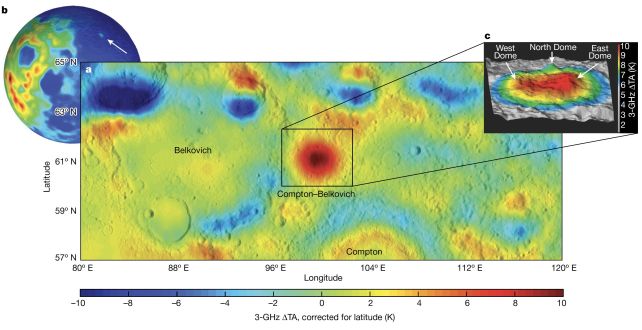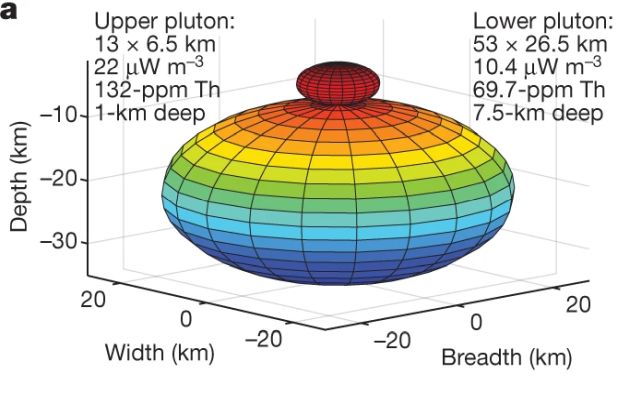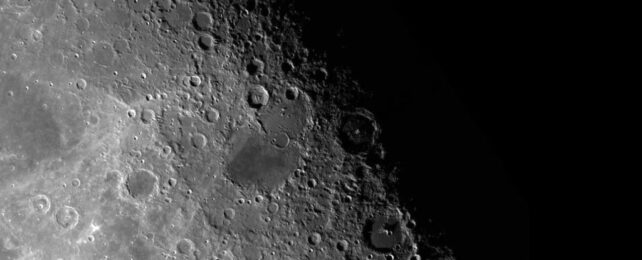A massive blob of ancient granite has been found lurking beneath the Moon's surface, evidence of a type of volcanism we've never seen there before.
Analysis suggests it's a deeply buried giant mass of solidified magma, or batholith, deposited some 3.5 billion years ago. We see this on Earth fairly frequently, but planetary scientists are excited to observe it on the Moon.
"Any big body of granite that we find on Earth used to feed a big bunch of volcanoes, much like a large system is feeding the Cascade volcanoes in the Pacific Northwest today," says planetary scientist Matthew Siegler of Southern Methodist University and the Planetary Science Institute.
"Batholiths are much bigger than the volcanoes they feed on the surface. For example, the Sierra Nevada mountains are a batholith, left from a volcanic chain in the western United States that existed long ago."

Granite is abundant on Earth but extremely rare elsewhere in the Solar System since it requires specific conditions to form.
Those conditions include a lot of liquid water, and plate tectonics, which help melt and recycle material in the planet's crust. Granite production requires multi-stage remelting of basaltic rock, or crystal fractionation in liquid basalt.
The Moon has neither liquid water, nor plate tectonics.
Yet beneath a volcanic region known as Compton-Belkovich, close to the north pole on the Moon's far side, microwave instruments on China's Chang'e 1 and Chang'e 2 orbiters picked up something strange. They detected anomalous heat, around 20 times higher than average for the lunar highlands.
The researchers were able to analyze the publicly available data from the China National Space Administration, and the findings surprised them.
"What we found was that one of these suspected volcanoes, known as Compton-Belkovich, was absolutely glowing at microwave wavelengths," Siegler says. "What this means is that it is hot, not necessarily at the surface, as you would see in the infrared, but under the surface.
"The only way to explain this is from extra heat coming from somewhere below the feature within the deeper lunar crust. So Compton-Belkovich, thought to be a volcano, is also hiding a large heat source below it."

Compton-Belkovich is notable because the region contains a great deal of thorium, a product of radioactive decay. The analysis conducted by Siegler and his colleagues indicates that radioactive elements in a granite matrix are likely the source of the heat beneath it.
That granite matrix is much larger than they would have expected, too – around 50 kilometers (31 miles) across.
This, the researchers say, is evidence for an evolved magma plumbing system much larger than expected for the Moon.
A system this large needs one of three things: a large mantle plume feeding in magma from within the Moon; an anomalously wet pocket inside the Moon in that location; or a patch of elements that could provide enough radiogenic material to produce enough heat for consistent re-melting.
All three imply large-scale compositional inconsistencies within the Moon that need to be explained.
"If you don't have water it takes extreme situations to make granite. So, here's this system with no water, and no plate tectonics – but you have granite," Siegler says.
"Was there water on the Moon – at least in this one spot? Or was it just especially hot?"
The research has been published in Nature.
